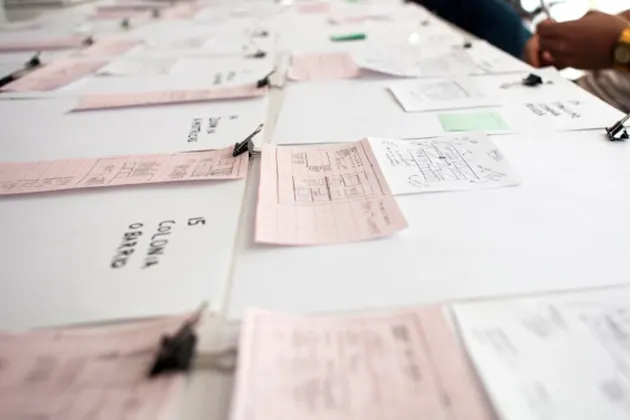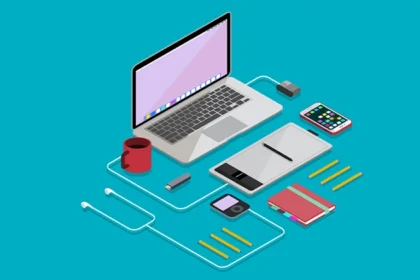While digital payment methods have grown in popularity, checks remain a relevant and secure way to manage both personal and business transactions. They provide a tangible paper trail, offer clear documentation, and are often preferred in certain professional or contractual settings. Whether you’re new to check-writing or want to ensure you’re following best practices, it’s important to understand the correct way to use checks to avoid errors, fraud, or unnecessary delays.
Checks may seem simple, but how you handle them can reflect your professionalism and financial responsibility. Even minor mistakes on a check can lead to complications with payment processing or recordkeeping. These six key points will guide you in making sure every check you write or receive is handled with care and precision.
Write Clearly and Avoid Alterations
One of the most common issues with checks is illegible handwriting or unclear entries. When you fill out a check, use a blue or black ink pen and write neatly in block letters. Make sure that the date, payee name, amount in numbers, and amount in words are all filled in accurately. Any discrepancies between the numerical and written amounts may cause the bank to reject the check.
Avoid leaving any sections blank. A blank space invites unauthorized changes, which could result in lost funds or disputes. For added security, draw a line through any remaining space in the amount field. If you make a mistake, it’s better to void the check and write a new one rather than crossing out and rewriting entries.
Clarity and accuracy are essential for getting the payment processed correctly and for maintaining reliable financial records. This becomes particularly important when checks are used for business purposes.
Know When to Use Checks for Business Transactions
Checks are still widely used in the business world, especially for vendor payments, contractor fees, rent, and larger transactions that benefit from detailed tracking. Many companies prefer checks for situations where payment confirmation and a paper audit trail are needed. This provides greater transparency than cash and often more control than automated transfers. Understanding the value of using business checks is crucial in managing professional finances. The second sentence of this paragraph highlights how checks allow business owners to separate personal and business expenses easily while maintaining clean accounting records. Many accounting software platforms integrate check-writing functions that sync with financial reports and reconcile with bank statements automatically.
Business checks also offer customization options, such as including your company logo or using pre-numbered forms to reduce the risk of duplication or loss. Choosing the right check format and keeping your check stock secure helps safeguard your accounts and uphold your professional image.
Verify Payee Information Before Issuing a Check
Before issuing a check, always double-check the name and details of the payee. Whether it’s a person or a company, spelling errors or incorrect information can result in delays or misrouted payments. Confirm that the recipient’s name matches their banking records to avoid problems when they attempt to deposit or cash the check.
If the check is for a business, make sure you are addressing it to the correct entity. Some companies operate under different trade names or have separate legal structures. Invoices or contracts will usually list the proper payee name to use.
Verifying details may seem minor, but it protects your funds and builds trust with vendors or employees. Taking a few extra seconds to confirm everything can prevent larger issues down the line.
Keep a Record of Every Check Issued
Each time you write a check, make a note of it. Whether you use a physical check register, accounting software, or an integrated online system, recording the date, check number, payee, and amount ensures your financial records remain complete and accurate.
This habit helps with monthly bank reconciliations and provides a clear history of payments made and received. In the event of a dispute or accounting error, having a consistent record offers proof of the transaction.
Keeping these records also aids in managing cash flow. Knowing which checks have cleared and which are still outstanding helps avoid overdraft fees or payment delays.
Store Checks Securely and Limit Access
Check fraud is a serious concern. Blank checks or checkbooks left in unsecured locations are an easy target for misuse. Always store your checks in a locked drawer, filing cabinet, or secure safe. In business environments, limit access to authorized individuals and implement check-handling protocols to prevent unauthorized use.
Some companies use pre-approval systems or require two signatures on checks above a certain amount. These steps add a layer of oversight and reduce the chances of fraudulent transactions.
Monitoring check inventory regularly and reporting missing checks immediately to your bank helps you stay ahead of potential risks. Security should never be an afterthought when handling any financial instruments.
Know the Rules for Depositing and Endorsing Checks
Receiving checks is just as important as issuing them. When you receive a check, endorse it properly on the back before depositing it into your account. The type of endorsement depends on how you plan to deposit it, whether in person, via mobile app, or through a third party.
Avoid endorsing a check before you’re ready to deposit it. If the check is lost or stolen after endorsement, someone else could attempt to cash it. Always write the endorsement in the designated area to prevent delays in processing.
Banks may have different rules on when funds become available after a check is deposited. Be sure to understand your financial institution’s hold policy, especially for larger amounts or out-of-state checks. This knowledge helps you manage timing and expectations for receiving funds.
Using checks responsibly is about more than filling in the blanks. It requires careful attention to detail, secure practices, and good financial habits. Whether you’re handling personal payments or managing business accounts, understanding how to use checks properly helps you maintain accurate records, protect your funds, and present yourself professionally in every transaction. With the right approach, checks remain a reliable and effective tool in today’s financial landscape.











